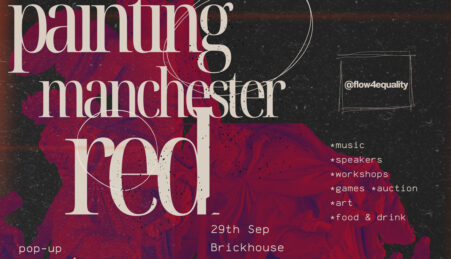 |
MMU’s Dr. Xavier Aldana Reyes with the Gothic TV panel:
Dr. Linnie Blake, Dr. Catherine Spooner and Dr. Stacey Abbott |
Words by Neil Harrison
If, as Alfred Hitchcock once claimed, ‘T.V. has brought murder back into the home where it belongs’, then over the years our appetite for the dark side of the small screen has shown little sign of diminishing. Thus, at MMU this week a panel of experts set about laying television’s more lurid qualities on the slab, ready for dissection.
To begin, Dr. Stacey Abbott of The University of Roehampton, delivered a paper entitled, ‘The Gothic Excess of T.V. Horror’, in which she explored the evolution of aesthetics within the genre. Drawing from a range of TV shows, including: True Blood, Dexter, Hannibal, Bones and Pushing Daisies, she argued that although television and film has continuously pushed the boundaries in terms of depictions of gore and violence, these are not necessarily prerequisites for a successful, or shocking, TV horror.
“To anyone who has watched shows like True Blood, The Walking Dead or even the mainstream procedural show Bones, it’s obvious that something has changed on television. These shows repeatedly present the body exploding into … pools of blood, being eaten by zombies or even, in Bones, being laid out on slabs for scientists to pick over”.
“[However], television is changing our understanding of Gothic horror. Early assumptions about the nature of TV horror … suggest a limited understanding about the nature of the genre, which has, like Gothic literature, often oscillated between traditions of suggestion and graphic display”.
 |
| MMU’s Geoffrey Manton Atrium |
Next up was MMU’s own Dr. Linnie Blake, who made an intriguing case for one particular Gothic TV show being a reflection of America’s political, economic and social psyche, in her paper ‘The Curious Case of The Winchester Brothers: Supernatural, Neo-liberalism and Gothic TV’.
“Chronicling the power struggles between angels and demons drawn broadly from the Judeo-Christian tradition, and deploying a cast of vampires, ghosts, demons, shape-shifters, tricksters, mad scientists, zombies and monsters from urban legend; the TV Gothic series Supernatural is both a quintessentially American narrative, and a sustained critique of the contradictions of the neo-liberal world from which it emerged”.
Discussing the show’s habit of evoking cultural landmarks within the American Gothic genre – from Edgar Allen Poe to The X Files, via The Texas Chainsaw Massacre – Dr. Blake went on to describe how Supernatural…
“ … addresses the impact that 30 years of industrial decline and community breakdown has had on the social and psychological integrity of the nation. What emerges is a terrifying picture of a country that has been plunged into chaos by neo-liberal economics.”
Finally, Dr. Catherine Spooner of Lancaster University, delivered her lecture entitled ‘Goth 2 Boss: Making and Unmaking Gothic Subjects On Television’, which unravelled how the small screen portrays Goths. Through TV comedies such as The I.T. Crowd, The Big Bang Theory and The Mighty Boosh as well as make-over shows like Snog Marry Avoid and Gok’s Style Secrets, Dr. Spooner explored how the use of Gothic fashion is often caricatured, or used as a kind of shorthand for the defiance of social convention.
 |
| The I.T. Crowd’s Richmond |
“In The I.T. Crowd and The Big Bang Theory, ‘Goth’ and ‘non-Goth’ were clearly demarcated by an invisible barrier, which may be crossed temporarily for comic purposes – but which always reasserts itself. Either you are a Goth, or you are faking it.”
“In Gok’s Style Secrets, similarly, a line is drawn between ‘Goth’ and ‘non-Goth’, but this must be crossed in order to demarcate taste and demonstrate personal growth. Goth is seen as a masquerade behind which a ‘real self’ is hiding.”
“In contrast, The Mighty Boosh … celebrates ‘Goth’ as a performance, and in doing so offers a much more radical view of Goth, and indeed Gothic. Within its hyperbolic, generically hybrid world there is no mainstream – and therefore no normal.”
This event was part of the ‘Contemporary Gothic’ strand of the Institute of Humanities and Social Science Research’s ‘Humanities In Public’ (HiP) programme. For more information and details of future events please visit the website.
Neil Harrison studies Social History at MMU, he is an aspiring writer, an awful guitar player and a reformed Goth. Follow him on Twitter @looseriver








Leave a reply